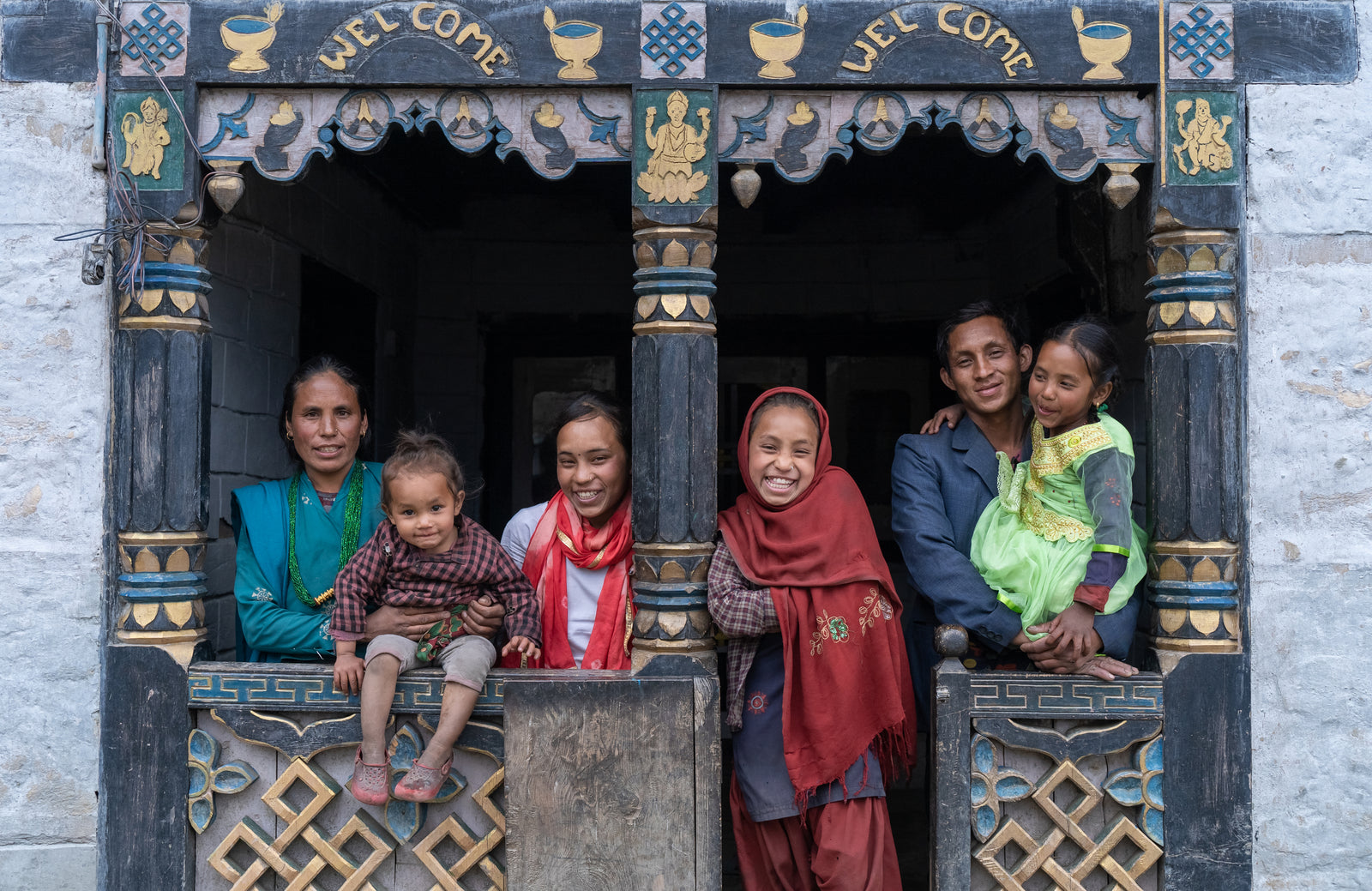Add description, images, menus and links to your mega menu
subjects
about us
Educational Opportunities with E-Learning & Solar in Dolpa
 |
 |
project
| Project number | NEP 23-002 |
| Accompanied by | BOOKS FOR CHANGE, Youth Foundation Nepal |
| Project location |
Dolpa, Nepal |
| Number of beneficiaries | 426 children |
| Focus |
Education
|
| Funding requirements | 38,000 francs |
| status | Financed |
Initial situation
A computer lab with 20 computers each will be set up at two schools in Dolpa to provide access to e-learning platforms and digital learning resources. Students can use online courses, interactive learning games, and multimedia materials in a fun way to further develop their knowledge and skills in various subjects. Learning objectives can be individually set according to the student's level and needs. The content is age-appropriate and aligned with the Nepalese curriculum and is made available offline via a server. Our e-learning partner organization, OLE, promotes the use of OER (Open Educational Resources), i.e., freely available learning materials. This gives learners in Dolpa access to a wide range of high-quality resources, including digital textbooks, interactive learning modules, and multimedia content, regardless of an internet connection, as all data can be accessed via the school's own server.
The project also aims to install a sustainable energy source in the form of solar power at the schools. The solar installation will not only improve the schools' electricity supply but also enable the sustainable integration of e-learning to improve access to education and the quality of learning. To this end, solar panels will be installed on the roofs of the schools to collect solar energy and convert it into electrical energy. Battery storage systems will also be installed to store excess energy for nighttime use or during inclement weather.
The project aims to expand learning opportunities for students and provide them with a solid foundation for their education. The project contributes to strengthening their cognitive skills, self-confidence, and enthusiasm for learning, opening up better future prospects for students.
Target group
E-learning can be of great importance at various levels of the education system. At the primary school level , e-learning can help students learn basic content in an interactive and engaging way. Digital learning games, interactive learning modules, or multimedia resources can be used to stimulate children's interest and increase their motivation to learn. At the secondary level, e-learning can help students expand their learning opportunities and deepen their knowledge in various subject areas.
The educational project also benefits teachers and school staff by providing them with additional resources and materials to enrich their teaching. The e-learning platform can help teachers support their teaching, offer students a wider variety of learning opportunities, and introduce new pedagogical approaches. Access to e-learning resources allows teachers and school staff to expand their teaching materials and enhance their knowledge and skills, resulting in a higher-quality teaching experience.
Shree Mukuteshwor Secondary School, Fulching
|
Number of children |
Level |
|||
|
Class |
boys |
Girl |
Total |
|
|
ECD |
11 |
17 |
28 |
Kindergarten |
|
1 |
9 |
6 |
15 |
Primary school |
|
2 |
3 |
14 |
17 |
|
|
3 |
8 |
13 |
21 |
|
|
4 |
10 |
6 |
16 |
|
|
5 |
8 |
9 |
17 |
|
|
6 |
14 |
7 |
21 |
Secondary school |
|
7 |
9 |
10 |
19 |
|
|
8 |
10 |
9 |
19 |
|
|
9 |
14 |
13 |
27 |
|
|
10 |
16 |
14 |
30 |
|
|
Total |
112 |
118 |
230 |
|
Shree Kasturi Secondary School
|
Number of children |
Level |
|||
|
Class |
boys |
Girl |
Total |
|
|
ECD |
3 |
12 |
15 |
Kindergarten |
|
1 |
1 |
4 |
5 |
Primary school |
|
2 |
3 |
3 |
6 |
|
|
3 |
4 |
3 |
7 |
|
|
4 |
4 |
10 |
14 |
|
|
5 |
3 |
11 |
14 |
|
|
6 |
15 |
20 |
35 |
Secondary school |
|
7 |
18 |
17 |
35 |
|
|
8 |
19 |
16 |
35 |
|
|
9 |
22 |
8 |
30 |
|
|
Total |
92 |
104 |
196 |
|
* Explanation of school levels in Nepal:
The preschool/kindergarten phase is optional for children between the ages of 3 and 5. This is where basic social, emotional, and cognitive skills are developed.
The age range for primary school in Nepal is typically between 6 and 11 years . The Nepalese education system typically consists of five years of primary education, beginning with preschool or grade one and ending with grade five. Classes focus on learning basic skills such as reading, writing, arithmetic, and fundamentals in science, social studies, Nepali language, and English.
Secondary education is divided into two phases: lower secondary (grades 6 to 8) and upper secondary (grades 9 and 10) . In these phases, instruction becomes more extensive and in-depth, and students are prepared for the final examination.
After successfully completing secondary school, students can enter the upper secondary school, which includes grades 11 and 12. Here, they can choose between various fields of study, such as science, commerce, or humanities.
After completing upper secondary school, students have the opportunity to study at colleges or universities to obtain a bachelor's degree.
Project objective and impact
 |
 |
What we do
E-learning
Expanding access to quality education: E-learning can provide high-quality educational opportunities to children in remote areas or with limited access to schools. The goal is to make education accessible and equal opportunities for all children.
- Support curriculum-based learning: E-learning complements traditional classroom instruction and curriculum. The goal is to provide students with additional resources, learning materials, and exercises to deepen their understanding of the course content and reinforce their knowledge.
- Create an interactive learning environment: E-learning offers interactive learning opportunities that encourage student engagement and active participation. The goal is to provide students with an interactive learning environment where they can actively learn through multimedia content, simulations, virtual experiments, and games.
- Develop digital skills: Through e-learning, students can develop digital skills that are crucial in today's digital world. The goal is to teach students basic computer skills, information research, critical thinking, and media literacy.
- Enable individualized learning: E-learning can allow students to learn at their own pace and accommodate their individual needs and interests. The goal is to create a personalized learning experience where students can customize their learning program and learn independently.
- Promote collaborative learning opportunities: E-learning offers students the opportunity to collaborate and learn from each other in virtual learning communities. The goal is to promote collaborative learning, where students can collaborate, share ideas, and benefit from each other.
E-Learning activities
- Installation of 20 computer terminals per school and an e-learning server. Access to the server is offline, eliminating the need for internet access. The server is updated periodically.
- Installation of servers and electrical cabling.
- Renovation of computer room, provision of furniture by local carpenter.
- Conducting training for teachers on the use of e-learning methods in teaching, regular maintenance of hardware and software to ensure smooth operation.
Solar
The goal of installing solar panels is to create a sustainable and environmentally friendly energy source that enables the school's e-learning program. Using solar energy allows the computers and e-learning infrastructure to operate independently of a conventional power grid. This offers several advantages:
- Sustainability: Solar panels utilize renewable energy sources, namely sunlight, which is abundant in Nepal. This reduces the school's carbon footprint by reducing the need for fossil fuels to generate electricity.
- Independence from power grids: In many rural areas of Nepal, the power supply is unstable or nonexistent. The solar system allows the school to operate independently of public power grids and continue its e-learning initiatives.
- Cost-effectiveness: Although the initial investment cost of installing a solar system may be higher, the use of free solar energy will result in significant long-term cost savings on the school's electricity bill.
- Extended operating hours: With an appropriate solar system, e-learning can also be operated outside of regular school hours, as the energy source can collect and store sunlight during the day.
- Educational opportunities for students: By providing a stable power supply, students can continuously access e-learning resources and benefit from a wide range of digital learning materials.
- Technological advances: The integration of solar energy into education promotes technological innovation and digital skills among both students and teachers.
- The installation of a solar system to support e-learning operations is therefore an important step toward creating a sustainable and future-oriented educational environment at the school in Nepal. It provides students with access to modern educational opportunities while also contributing to the school's environmental sustainability.
Solar Activities
- Installation of 20 computer terminals per school and an e-learning server. Access to the server is offline, eliminating the need for internet access. The server is updated periodically.
- Installation of servers and electrical cabling.
- Renovation of computer room, provision of furniture by local carpenter
- Conducting training for teachers on the use of e-learning methods in teaching, regular maintenance of hardware and software to ensure smooth operation.
Contact person

Pranita Chettri
As co-founder of BOOKS FOR CHANGE, I am passionate about promoting equality and children's education.
My strong belief that education is the key to a better future drives me. I'm particularly excited about the opportunity to improve the quality of learning in Nepal by supporting e-learning. This not only enables improved access to education but also contributes to raising the overall quality of education, opening up new opportunities for people to reach their full potential.



